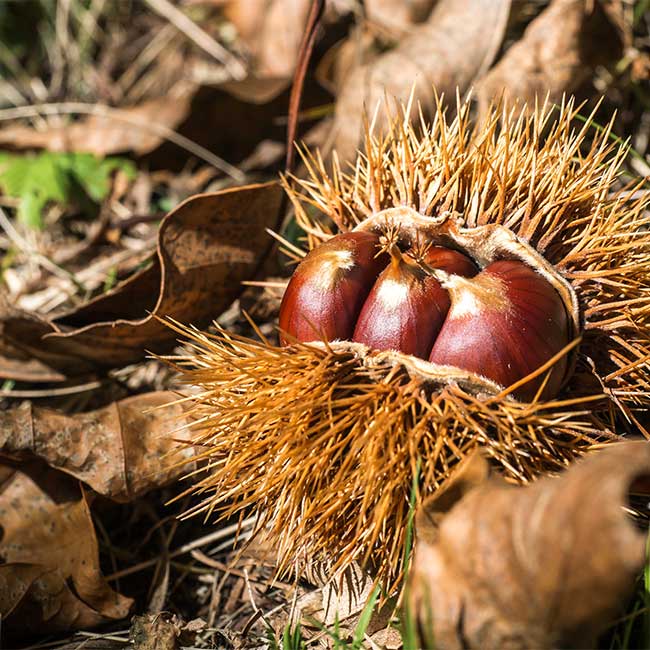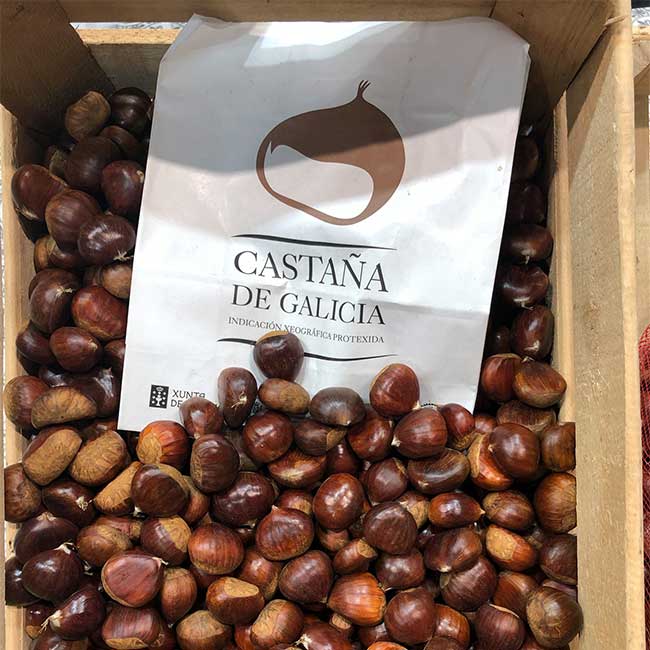.png.transform/rendition-xs/image_image%20(1).png)
Roasting Spanish Chestnuts Over An Open Health Market
An emblematic protagonist in Spanish gastronomy, chestnuts are reminiscent of autumn and winter, and often associated solely with the festive season. Yet chestnuts have slowly become a key player in the health food space.

Spain is the fourth largest producer of chestnuts in the European Union producing approximately 16,000 tons per year and ranks among the top ten producers worldwide. Among European producers, Spain is preceded by Greece, which produces close to 32,000 tons, Portugal, which produces almost 27,000 tons annually, and Italy, which is currently the largest chestnut producer in Europe with an annual production of over 50,000 tons.
In Spain, most chestnut trees and plantations, and thereby chestnut producers, are concentrated in the northern and central regions of the country, where the climate is cooler, rainier, and mostly humid. These conditions greatly favor chestnut trees and their chestnut production yield.
The region with the greatest chestnut production is principally Galicia, located in the North West corner of Spain followed by other important regions such as Extremadura and León province in Castile León.

In recent years, Spain has lost market share both worldwide and within Europe due to difficulties with chestnut production loss resulting from drier-than-usual summers and blight fungus, a plant disease affecting chestnut trees. Despite these clear challenges, the market demand for chestnut products has nonetheless seen steady growth for some producers.
Spanish chestnuts, the nut par excellence
Nutritionally, chestnuts are considered to be the nut par excellence due to their multiple health benefits. Widely planted during Roman times, chestnuts have historically been prepared and consumed in distinct ways throughout the ages. They are a rich source of Vitamin B and C, and help strengthen the immune system. These tasty nuts are easy to digest, a rich source of dietary fibre, and a perfect nutrient-dense alternative for consumers who are either gluten-sensitive or who suffer from celiac disease.
Besides the traditional Christmas season, the chestnut market has seen an evolution in the creation of different products such as gluten-free, organic chestnut flours, ready-to-eat chestnut snacks, low-glycemic chestnut purees and alternatives like chestnut chocolate spreads for customers looking for healthier options. As such, the international and domestic markets have seen steady change due to more conscientious consumers.
Companies such as Naiciña, a small family-run business based in Chantada, Lugo (Galicia), have been forerunners in the chestnut packaged goods space for the last thirty years. The company is purposefully located in the heart of chestnut country, says Miguel Ángel Areáns González, Chief Exective Officer at Naiciña, this fact gives them an undeniable competitive advantage when it comes to sourcing raw materials of the highest quality, states the CEO.
Founded in 1972, the company has been producing and selling packaged chestnut products since 1985. It was the first Spanish company to sell chestnuts under the denomination of origin, IGP Castaña de Galicia, and the first to process, package and commercialize chestnut flour as early as 1998. Today, Naiciña sells mostly via their wholesale, hospitality product line, and direct-to-consumer distribution channels.

Naiciña, whose sales totaled 1.4 million euros in 2019, currently exports their products to the United Kingdom, Germany and Switzerland, the Unites States and Japan. They sell an array of products, says Areáns González, ranging from fresh, peeled and frozen chestnuts to packaged products such as chestnut snacks, crèmes, marmalades and purées, classic marron glacés, chestnut flours (conventional and certified organic), chestnut chocolate spread, and a unique chestnut and boletus mushroom paté.
In recent years the company has seen an increased demand of chestnut flour from customers that are more health-minded, explains Areáns González, particularly due to the increased awareness of allergies, adds the CEO. Domestic sales for chestnut flour have increased 200% year-over-year in recent years, and a steady rise in sales to health-minded customers and suppliers overseas account for 70% of international chestnut flour sales.
Companies such as Alibos Galicia S.L. also are dedicated to selling and distributing chestnuts to both domestic and international markets. Located in Monterroso (Lugo), Alibos Galicia is the largest industrial chestnut processor in Spain says, Rocío Freire, Production and Quality Manager at the company. While the company does not specialize in consumer-package-goods, it does supply peeled, deep frozen and ready-to-process chestnuts to many suppliers and large supermarket chains in France, Italy, Germany, Portugal, Switzerland and England, as well as Japan and the United States.
Most of these countries, says Freire, have a gastronomic tradition of using chestnuts in daily cooking, and thus have a much greater awareness of the health benefits of this nutrient-dense product. This, in turn, translates into higher demand for the product, adds the manager, particularly for suppliers selling to health-conscious consumers. While supplier demand has been steady during the pandemic, Alibos has experienced a greater demand from France and Switzerland for certified organic chestnuts. A clear sign of steadily growing demand for products of the highest quality, and of an ever-increasing focus on organic products as well, states Freire.

